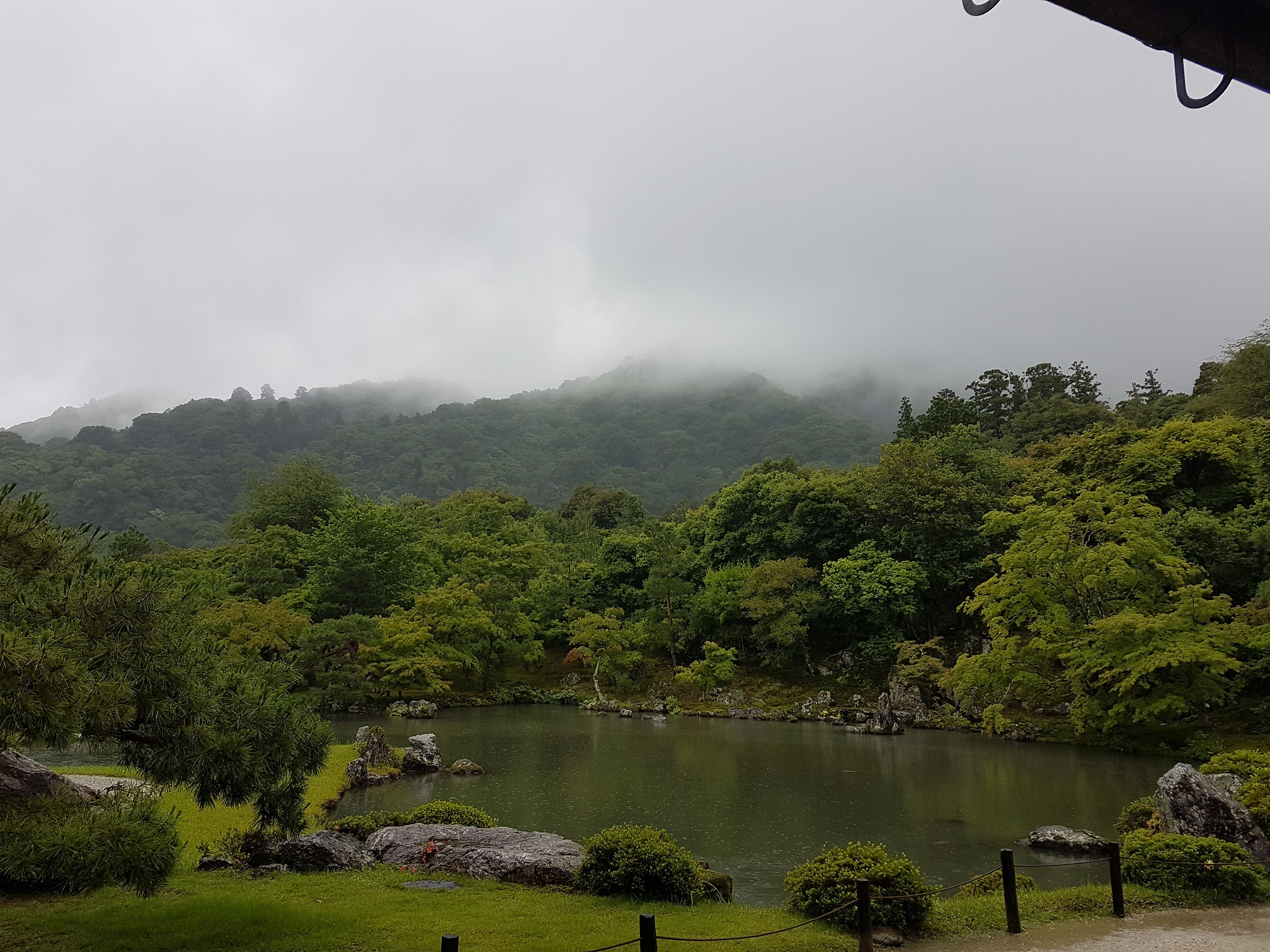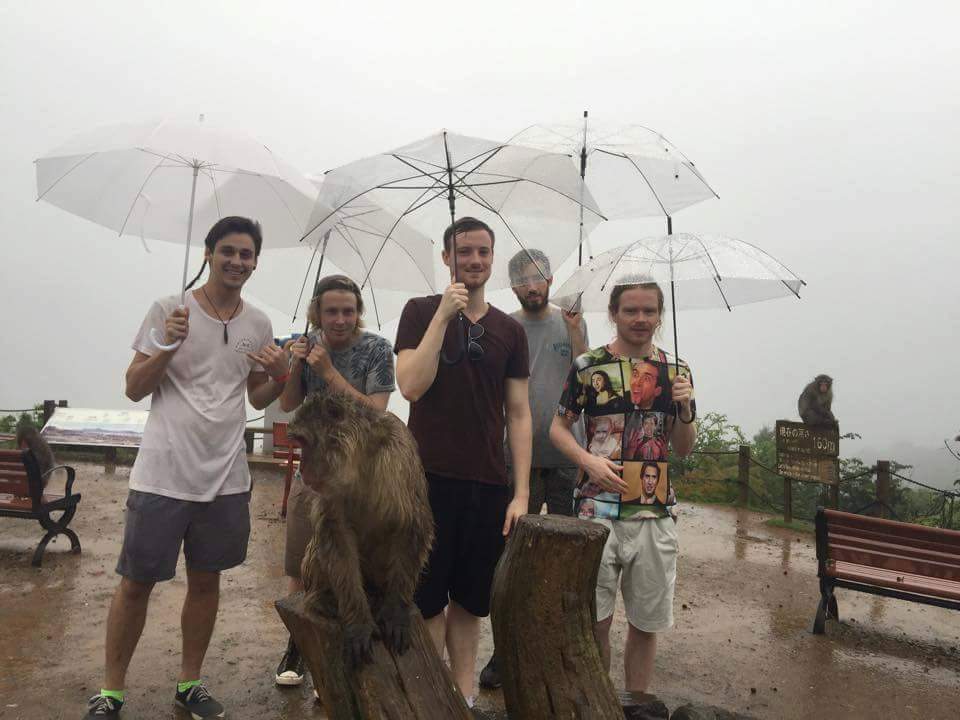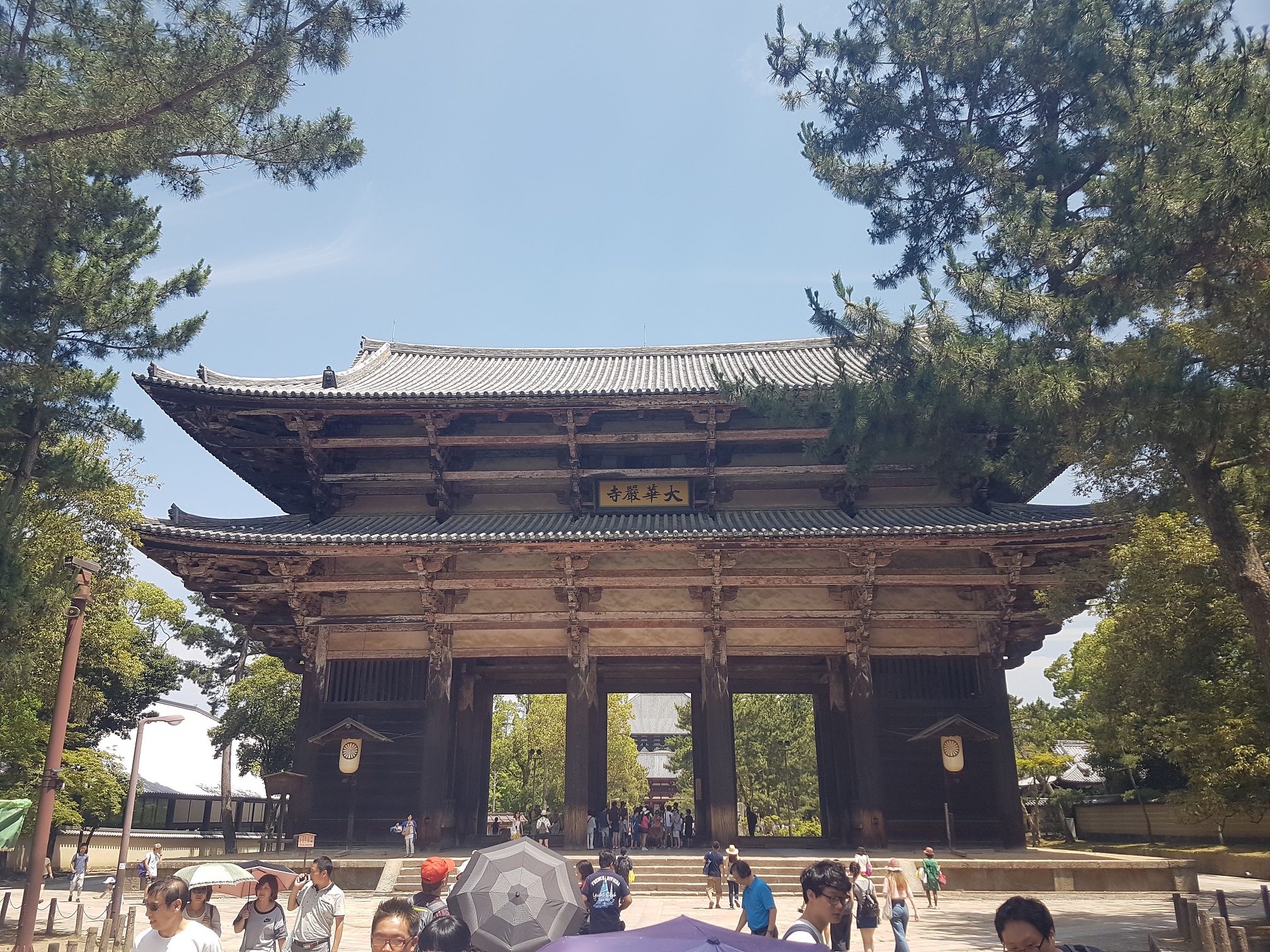This is the third of four posts about my recent trip to Japan. Previously, The Food of Japan
Kyoto was a city steeped in quiet reverence. We spent our days walking through a blanket of drizzling rain that muffled the footsteps of passers-by and dimmed their voices to a murmur. The overcast skies and constant rain should have made the atmosphere gloomy, but it was peaceful, a soothing backdrop to our walks through gardens and temples and mountainside forests.
We arrived in Kyoto on the Shinkansen after five days in Tokyo. The Shinkansen is the bullet train system that Japan is famous for around the world, a backbone, or maybe more appropriately, a network of arteries of super-fast trains, carrying thousands of passengers across Japan's body every day. It's known for it's efficiency, with an average delay per train measured in seconds[1]. After a scramble through several metro lines and stations with all our bags and half an hour or so figuring out how to cash in our JR Rail Passes (an 'all access' rail pass only available to foreigners), we finally got to the platform. There was just enough time to take a smoke/Pocari Sweat[2] break before boarding our train, which of course arrived exactly on time[3].
The train picked up speed quickly until the countryside was hurtling past, at something over 300km per hour, which it kept up for most of the journey. The Shinkansen isn't a maglev train, it's just a ordinary electric train. It can reach and maintain those extreme speeds mostly because of the complete separation of Shinkansen lines from slower forms of transport.
One of the first things I wondered before I went to Japan was why the word Kyoto was just the syllables in Tokyo switched. 'Kyo' means 'capital city'[4] and 'Tokyo' means 'Eastern Capital City'. Kyoto was the capital city until 1869, hence the name. It was the seat of the Imperial court for over a thousand years, compared to Tokyo's piddly 147, but is a much smaller city than Tokyo today at only a million or so people. The history and this difference in population make Kyoto feel much older, quieter, and much much greener. It's full of ancient temples and mountain gardens, and the change of pace in Kyoto is like matrix-style-bullet-time if Tokyo were on regular time.
I did my research ahead of time, and made plans to stay at Yachiyo ryokan, a traditional Japanese inn. When we arrived our shoes were stolen by the staff (we were used to it by this stage) and an elderly lady in a traditional kimono set us up with hot green tea on a low table and mats in our room, which was strangely devoid of beds. Later that night I discovered that they were set up around 7 or 8 pm while we were out, and were basically just mattresses on the floor.
The next day came our pilgrimage across Kyoto through the mists of rain mentioned above. I wanted to visit a few places scattered across the city, and in our trek to visit them all we went through temples covered in gold leaf or made of towers of logs stacked high, cosy back streets, slippery mountain trails, smoky alleyways...
...and a forest of bamboo.
The last thing we made it to, just before it closed, was the monkey park. It was hidden at one end of the city and we got lost on the way there, and then after getting admission to the park we found out there was another half hour to the park at the top of the mountain. We were red faced and puffing by the time we got there[5] but it was worth it.
After two nights in Kyoto we took the Shinkansen again down to Osaka, where we stayed for the rest of my trip. The highlight of Osaka had to be our meals in Dotonbori, the thriving night district known for some of the best food in Japan. We stopped into an Aussie pub called Coolabah there one night for a few stubbies of VB.
We were approached by some Japanese girls around our age in Kyoto at a cafe, and met up with them again in Osaka for dinner and karaoke[6].
We spent a day trekking around Osaka and spent a while at the Osaka castle as well. Osaka was another past capital of Japan, from 645-655 and again from 744-745, and Osaka castle was the seat of imperial rule during those times.
We also made sure to do a day trip to Nara, only an hour away from Osaka. Nara is famous for two things. The first is the deer that live in the city alongside humans...
...and the second is for having the largest Buddhist temple in Japan.
It too was a capital city in the past, from 710-794 (minus the year it was Osaka). The ancient Japanese Emperors seemed to have a thing for moving the capital to their home prefecture every time one family took over from another.
Before leaving Nara we scaled one of the hills at Nara temple, for one of the best views of the trip.
The next day was my last day in Japan, spent catching trains across Osaka to Osaka station, a Shinkansen to Tokyo, Skybus to Narita Airport, and a flight home to Sydney via the Gold Coast. My taxi driver was asking me about Japan after I landed in Sydney and wanted to know what the roads and cars were like[7]. I spoke for over half an hour. Every facet of life and the culture in Japan is different in some subtle - or not so subtle - way, shaped by it's unique history and people. It's an amazing country and I encourage anyone who has the time and means to make the effort to visit.
Next up, the Ingenuity and Uniqueness of Japan.
Footnotes
54 ↩︎
See the previous Japan post on food if you don't know what Pocari Sweat is. ↩︎
Not only does 'Kyo' mean capital city, so does Kyoto. The extra 'to' on the end was inspired by the Chinese word jingdu according to Wikipedia. ↩︎
Or at least I was. ↩︎
Something they were much better at than us. Unless you count yelling Rage Against The Machine songs at each other as 'singing.' ↩︎
Cars - smaller, cheaper. Roads - larger, but almost empty. Everyone just catches the metro. ↩︎





















































